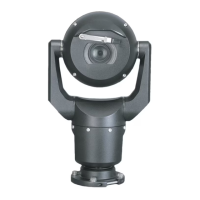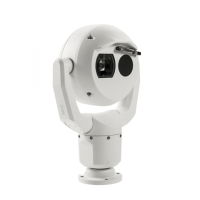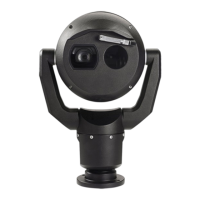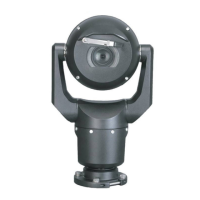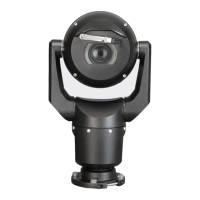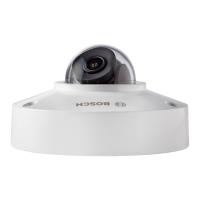MIC IP ultra 7100i │ MIC IP starlight 7100i Connections | en 43
Bosch Security Systems Installation Manual 2019-07-03 | 0.17 |
13.3 Ethernet Connections
Caution!
Ethernet cables must be routed through earth-grounded conduit capable of withstanding the
outdoor environment.
Cable Type Cat5e/Cat6 Shielded Twisted Pair (STP) Ethernet (directly to the
camera, or to a network switch between the camera and the network)
Note: Cat5e/Cat6 Shielded Twisted Pair (STP) cable is required in
order to meet European regulatory EMC standards.
Maximum Distance 100 m (330 ft)
Ethernet 10BASE-T/100BASE-TX, auto-sensing, half/full duplex
Terminal Connector RJ45, Male
High PoE For models with attached illuminators: Use the 95 W midspan sold by
Bosch.
For models without illuminators: Use the 60 W midspan sold by Bosch,
or a midspan that is compliant to the IEEE 802.3at, class 4 standard.
Note: Consult the National Electrical Code (NEC) or other regional standards for cable
bundling requirements and limitations.
13.4 Camera Connections
All electrical and data connections from the camera are made from the connectors in the base
of the camera.
* For more information, refer to the installation manual Power Supply Units (AUTODOME VG5-
and MIC IP Camera Models) (shipped with VG4-A-PSU1 and VG4-A-PSU2).
Note: If the MIC camera will be installed directly to a mounting surface, instead of onto a MIC
DCA or a MIC wall mount bracket, Bosch recommends using the connector kit for your model
of camera to protect the connections against moisture and dust particles. Each kit provides
components for connecting as many as 5 MIC cameras.
– MIC-9K-IP67-5PK (Connector kit for MIC IP fusion 9000i and MIC IP ultra 7100i cameras)
Not using the IP67 Connector Kit will void the camera warranty.
Note: The PoE connection is not intended to be connected to exposed (outside plant)
networks.
Seal the base of the camera against moisture ingress (standing water).
13.5 Connect the Camera to the Network
Note: The total length of Cat5e/Cat6 Shielded Twisted Pair (STP) cable must be less than 100
m (328 ft) between the camera and the head-end system.

